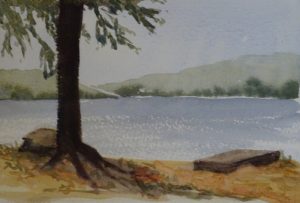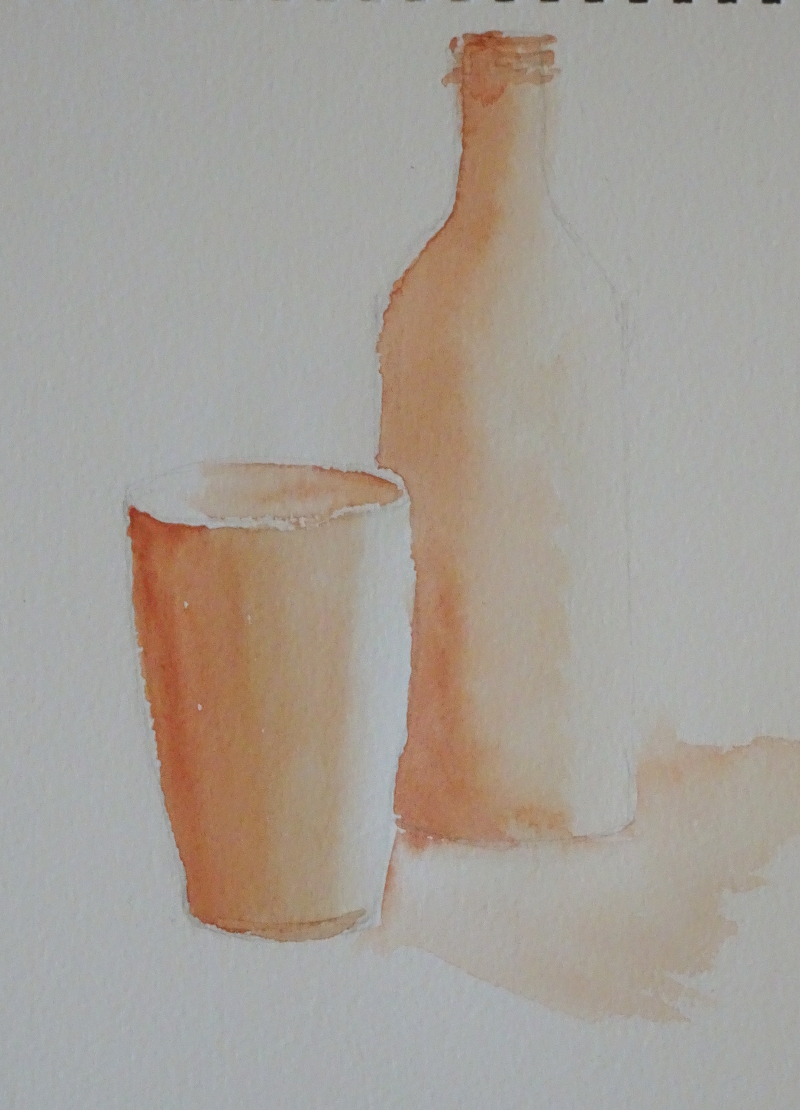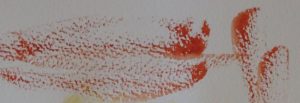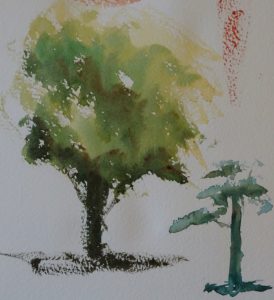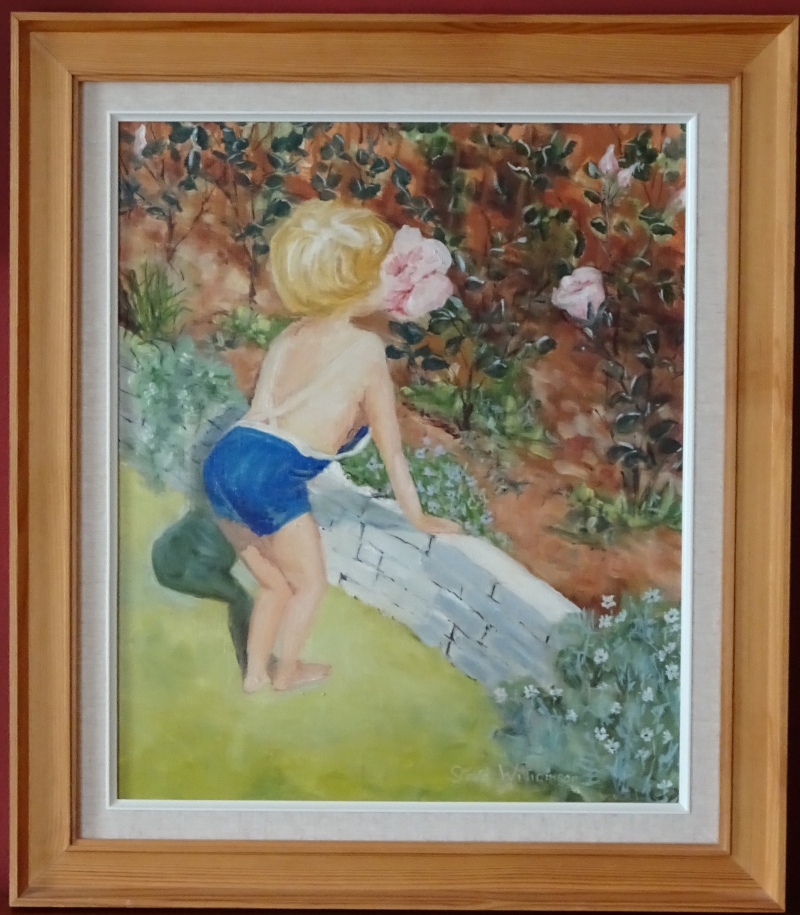Reading an article by my favourite guru, Hazel Soan, I was struck all of a heap by her remark that we paint shadows in watercolour to create light. OK! OK! I’ve known this intellectually and attempted to practice it for years – I’ve even demonstrated it . But coming to watercolour from oil painting where we create light in dark places, I have not truly understood it nor appreciated the implications. It’s as if the mechanics have over-ridden the concept. Have I finally arrived in a new place in watercolour painting? Is this enlightenment what painting blocks are for?
Fortuitously, I had intended to consider watercolour shadows in the next stage of watercolour basics, so I’m keen to see if enlightenment makes a difference, and, much more important, can I export the concept to the class.
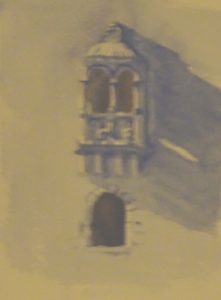 This is a much more difficult idea to get across than I at first realised. I used the method of painting every part that is not a highlight in a soft Ultramarine Blue. But even achieving a “soft” blue is fraught. Pale watercolour consists of low pigment/ high water mix, but it’s essential to reduce the water held in the brush before picking up this dilute paint if the painted passage is not to pool and puddle or rush uncontrollably over the page. Then painting shadows blue when they are patently red or brown seems obtuse. Nevertheless, some students were beginning to understand, so we will try again next week, using figures as our image.
This is a much more difficult idea to get across than I at first realised. I used the method of painting every part that is not a highlight in a soft Ultramarine Blue. But even achieving a “soft” blue is fraught. Pale watercolour consists of low pigment/ high water mix, but it’s essential to reduce the water held in the brush before picking up this dilute paint if the painted passage is not to pool and puddle or rush uncontrollably over the page. Then painting shadows blue when they are patently red or brown seems obtuse. Nevertheless, some students were beginning to understand, so we will try again next week, using figures as our image.

